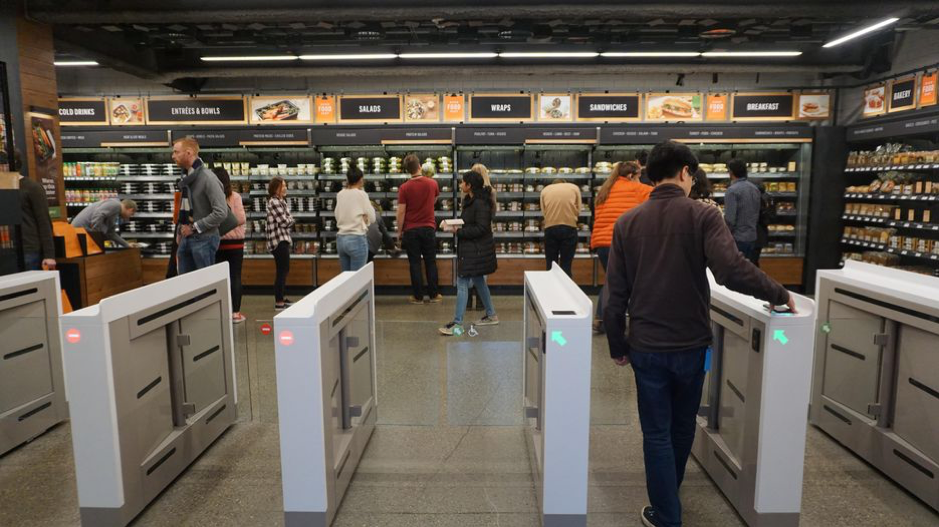From travel, to retail, to hospitality – self-service technology is everywhere. We are becoming a society that expects to be able to order in our own time and customize products to our liking. And with the increased efficiencies and reduced staff costs that come with self-service technology, operators are all too ready to buy-in, too. But where did it all start? New forms of consumer buying behaviour don’t happen overnight…
Join us as we take a look-back over the past 200 years and discover how we became a society that loves to order and pay ourselves.
The evolution of self-service technology
1833 – The vending machine
The coin-operated vending machine was invented by Percival Everitt in 1833. First launched in London, it initially sold postcards before being rolled out in railway stations and post offices across the country – dispensing envelopes, postcards and notepaper.
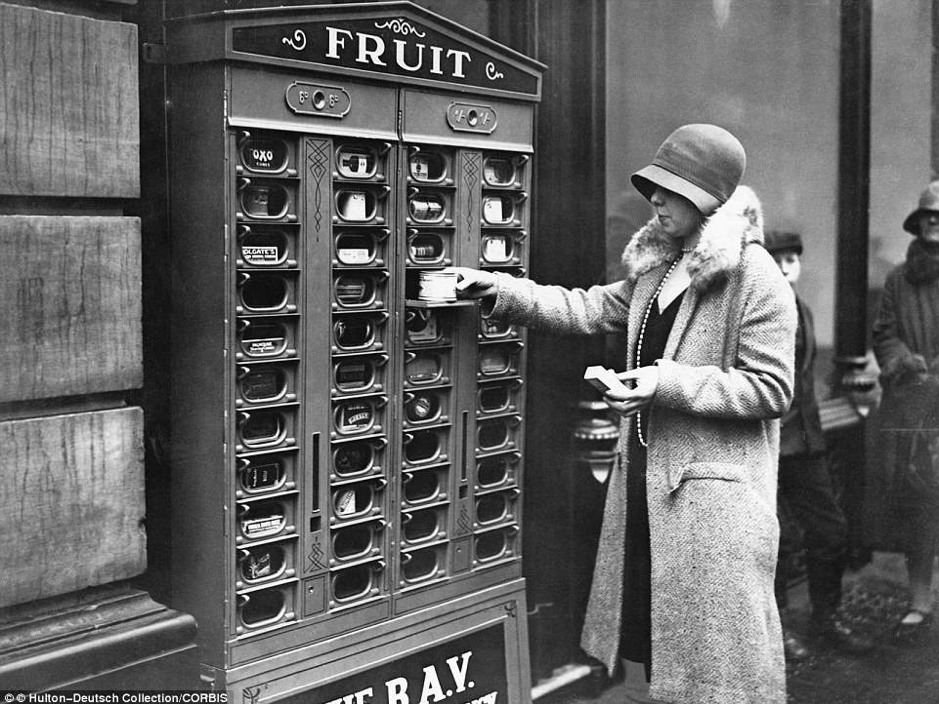
Image courtesy of Hulton-Deutsh Collection/CORBIS
The US followed suit some years after, with the first American vending machine appearing on New York City train platforms in 1888 selling chewing gum. The handiwork of Thomas Adams Gum Company, the machines were used to promote and dispense the brand’s ‘Tutti-Frutti’ gum range – a flavour still going strong today.
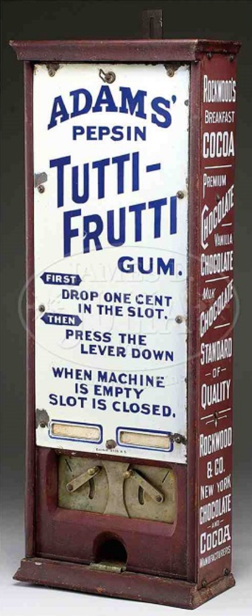
Image courtesy of steemit.com
The vending machine continued to evolve over the next half century, both from a design perspective and product offering. By the mid-20th century vending machines came in all shapes and sizes and were selling everything from food and beverages to household items.
Vending machines in the 40s…
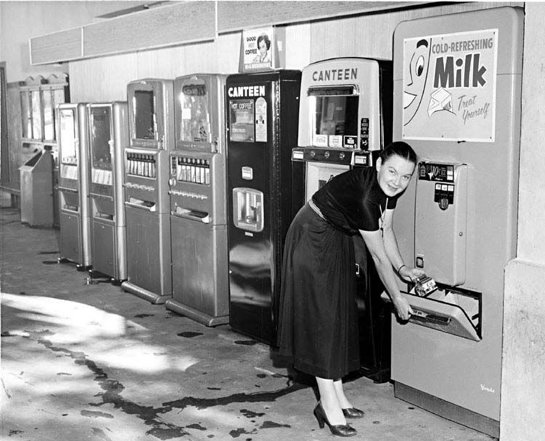
Vending machines in the 60s…
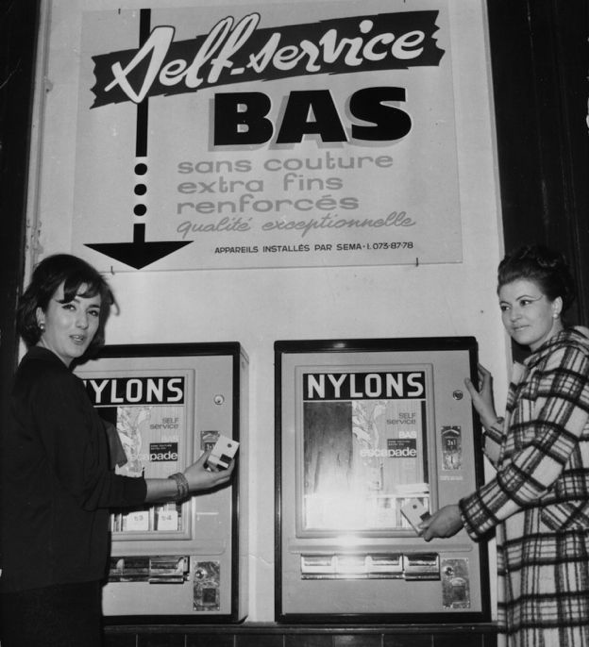
Images courtesy of pinterest
1964 – The self-service gas station
On June 10 1964 John Roscoe began offering self-serve gasoline at his Big Top convenience store in Denver, Colorado. Roscoe said that it took “30 seconds” to realize that he was onto something big.

Image courtesy of pinterest
1992 – The supermarket self-checkout
In the early 1990s, Dr Howard Schneider developed the first retail self-checkout system (called “the service robot”) and by 2003 self-checkouts were prevalent in retail stores across America and by 2024 the market is expected to hit $4billion, with 468,000 units installed globally.

Image courtesy of ixtenso.com
1995 – Amazon & eBay
In 1995 Amazon launched as an e-commerce site that sold books only, and in the same year eBay (then called AuctionWeb) was borne out of Pierre Omidyar’s living room in San Jose. Since then the sites have grown into multi-billion dollar companies that have changed the way consumers like to buy and sell goods. We are now a society that wants speed, convenience and efficiency when it comes to retail transactions, and we want the option to do all from the comfort of our own homes, too.

2000: The (r)evolution of the kiosk: From airports to hospitality
Self-service check-in kiosks began to crop up in airports in the U.S in 2000 and rolled out on mass after 9/11. New requirements for security meant people were moving through the line slower and self-service check-in seemed like a good solution to both reduce congestion and drive down staff costs. The airline industry very much led the way with self-service kiosks and soon after we began to see a significant uptake of the technology across sectors; first retail, and now hospitality.

Leading the way with self-service technology in hospitality is undoubtedly McDonald’s. After 2014-15 and its first full-year fall in like-for-like sales (due to competition from more up-market establishments and some other supply chain issues) the fast food giant realised it needed to “disrupt, or be disrupted”. And seeing an opportunity in self-service tech, it launched an aggressive plan that would see stores across the U.S modernized to include self-service kiosks, mobile order and pay in multiple locations across the world, paired with off-premise delivery in some areas too.
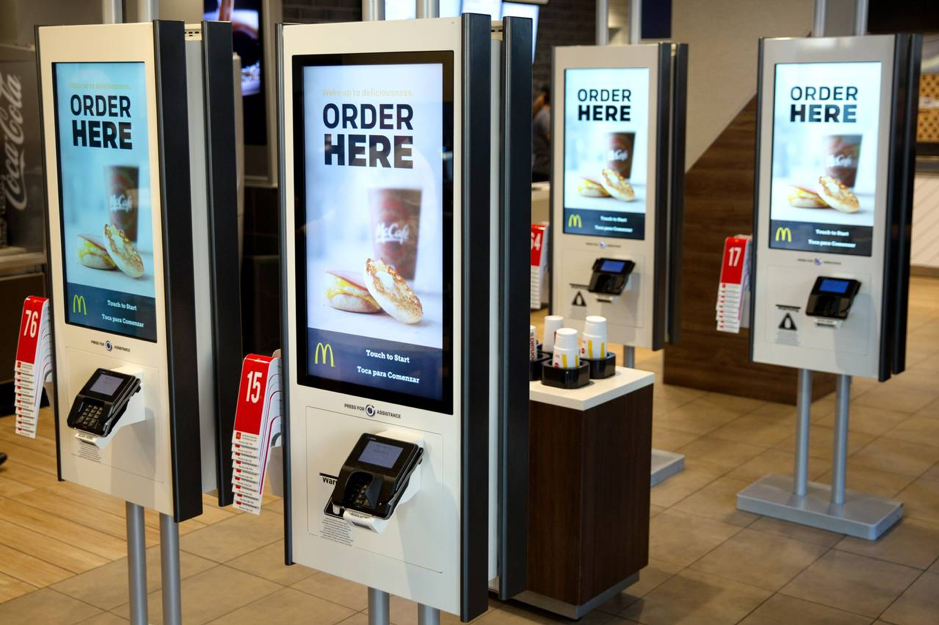
The new business model – dubbed “Experience of the Future” – has been a huge success; McDonald’s stock prices grew by 45% in 2017 and today, in FY 2018-19, they are still showing no signs of stopping (increasing 4% in Q1 alone).
The future: frictionless stores
So, if 2018 is the year of the kiosk, what does the future hold for self-service technology?
Amazon may hold the secret… The retail giant recently opened its first cashierless store ‘Amazon Go’ to the public, which allows customers to walk in, pick up their items and leave without paying – or so it seems. In reality, the store uses cameras and pressure pad technology to track customer’s movements in-store and deducts the cost when they leave via the Amazon Go app. A similar concept recently launched in China. ‘BingoBox’ asks customers to scan a QR code on entry then uses facial recognition linked to WeChat and Alipay (the biggest payment providers in China) at the point of sale.
If these futuristic stores are anything to go by, self-service technology of the future is set to be almost frictionless; based on seamless, unconscious reactions that don’t require customers to do –well anything really! Reign it in to the immediate future, we expect to see a move away from capital intensive kiosks in Hospitality in favor of consumer owned devices – particularly in the Quick Service Restaurant and Fast Casual industries where fully digitized order and pay self-service journeys both fit the brand and meet customer expectations.
